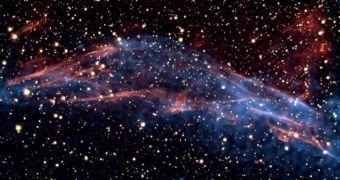As the third of NASA's four Great Observatories, the Chandra X-ray Observatory played a very important part in boosting our knowledge of the space around our corner of the Universe. The telescope, which has been surveying the skies since 1999, managed thus far to send back useful, new data on various X-ray sources all around us, and also to boost our basic knowledge of structures such as neutron stars, black holes, and so on. Now, recognizing the important contribution that the instrument has brought forth, mission managers are pleased to announce that the contract supporting science and operations has been extended.
NASA has decided to prolong its contract with the Smithsonian Astrophysical Observatory, in Cambridge, Massachusetts, in order to ensure a few more years of Chandra observations. Though the mission was initially planned to last for five years, almost ten and a half have passed since the spacecraft was commissioned. It was launched from the Kennedy Space Center (KSC), in Florida, aboard the space shuttle Columbia. The take-off was scheduled for July 23, 1999, when the STS-93 mission delivered the new satellite to orbit. Chandra was ferried inside the shuttle's cargo bay.
“The contract extension with the Smithsonian Astrophysical Observatory provides continued science and operations support to Chandra. This approximately $172 million modification brings the total value of the contract to approximately $545 million for the base effort. The base effort period of performance will continue through September 30, 2013, except for the work associated with the administration of scientific research grants, which will extend through February 28, 2016. The contract type is cost reimbursement with no fee,” NASA officials say.
“In addition to the base effort, the contract includes two options for three years each to extend the period of performance for an additional six years. Option 1 is priced at approximately $177 million and Option 2 at approximately $191 million, for a total possible contract value of about $913 million,” they add.
NASA's Marshall Space Flight Center in Huntsville, Alabama, manages the Chandra program for the agency's Science Mission Directorate, in Washington DC. The Smithsonian Astrophysical Observatory controls Chandra's science and flight operations.

 14 DAY TRIAL //
14 DAY TRIAL //